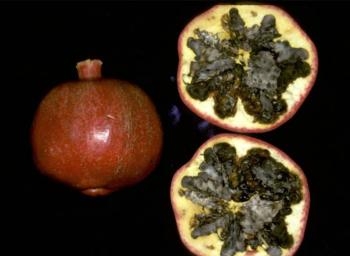From the UC Blogosphere...
UC scientists studying 'baffling' pomegranate ailment
A mysterious sudden crippling or death of pomegranate trees may be due to cold temperatures, said a story in Western Farm Press.
Three farmers and Themis Michiliades, UC Davis plant pathologist based at the UC Kearney Agricultural Research and Extension Center, agreed that low temperatures have a lot to do with the problem. Michailides cited an Iranian research paper that showed similar cold snap damage. Michailides and Richard Molinar, UC Cooperative Extension farm advisor in Fresno County, said damage from dieback this year was more common in sandier soils, perhaps because heavier soils hold moisture.
Writer Dennis Pollock reported on the problem in his article about a recent pomegranate field day at Kearney. At the field day, Michailides also reported on "black heart" of pomegranate, caused by Altenaria fungus, and cankers caused by species that include Neofusicoccum mediterraneum.
Claude Phené, a retired USDA-ARS researcher, discussed a two-year-old pomegranate irrigation and fertigation trial at Kearney.
Turning Over a New Leaf (Footed Bug)
When you first see the leaffooted bug, you know immediately how it got its name. The appendages on its feet look like...

Close-up of leaffooted bug. (Photo by Kathy Keatley Garvey)
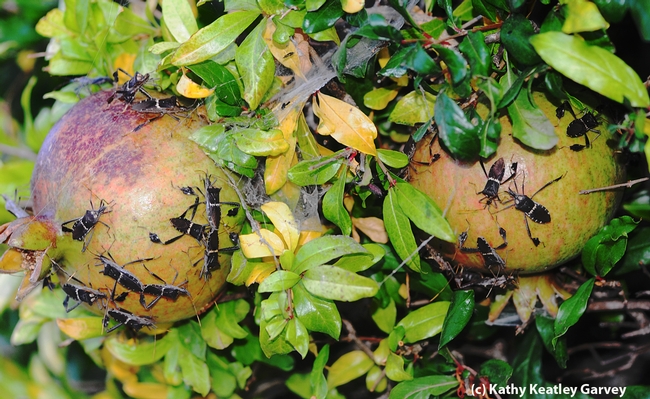
Leaffooted bugs making pomegranates their kitchen, living room and bedroom. (Photo by Kathy Keatley Garvey)
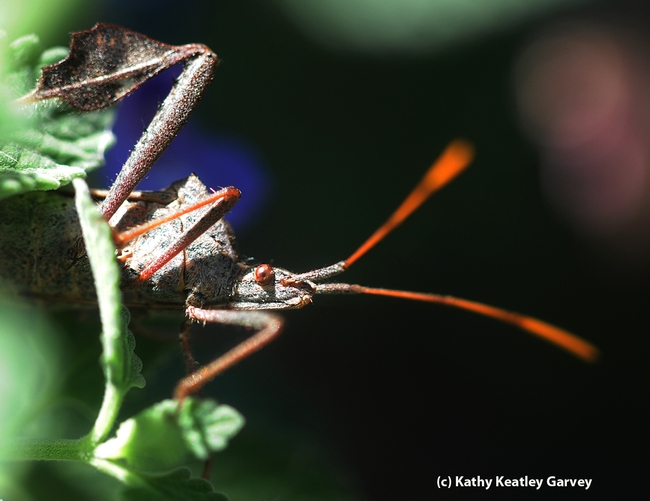
Beady eyes, colorful antennae and appendages on its feet that look like leaves. (Photo by Kathy Keatley Garvey)
Lavender Plants
My six-year- old lavender plants are woody and falling apart. What have I done wrong? Should I plant some other...
'Conservation agriculture' gaining favor with California farmers
A desire to reduce fuel and water use is leading some farmers in the Central Valley to operate in new, more sustainable ways, reported Alice Daniel on KQED's The California Report this morning.
For the five-minute story, Daniel interviewed Jeff Mitchell, UC Cooperative Extension specialist in the Department of Plant Sciences at UC Davis, and Dino Giacomazzi, a Hanford dairy farmer. These new farming systems, they said, aren't straight forward and require a steep learning curve.
Sometimes they find themselves wondering, "What is happening out here?" Mitchell says. "And all your built-up experience base flies out the window."
In the last seven years, Giacomazzi has dramatically changed the way he grows cattle feed. He has reduced the number of times he tills the field from 14 to just 2 times a year. Despite documented savings in fuel and reduction in dust emission, conservation agriculture has not been implemented widely in the Central Valley. Farmers like innovation, Giacomazzi notes, but many are reluctant to take the risk associated with changing long-held farming practices.
"It's very difficult to make money farming," Giacomazzi said. "You're only going to get one shot each year to make it."
Those interested in learning more about conservation agriculture systems are invited to the annual Twilight Conservation Agriculture field day, 4 p.m. Sept. 13 at the UC West Side Research and Extension Center. For more information, see the meeting announcement. Register for the free event here: http://ucanr.edu/TwilightReservation.

Farmers can reduce fuel and water use and cut down on dust emissions using conservation agriculture practices.
In Mint Condition
if you're growing plants in the mint family, Lamiaceae--you know, the plants with the square stalks and opposite leaves--you...
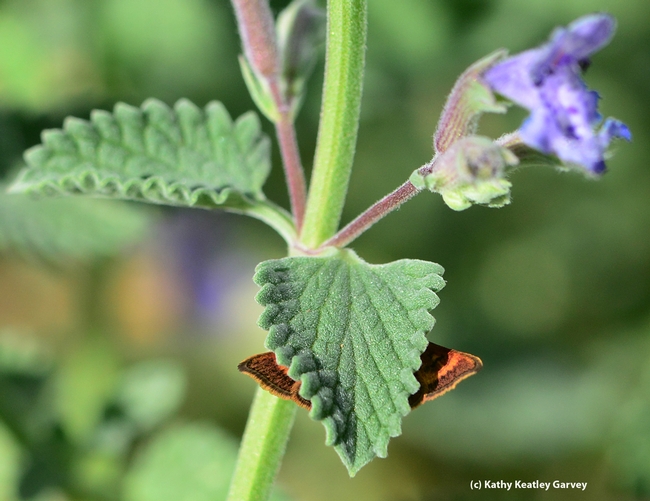
What's behind the catmint leaf (Nepeta)? (Photo by Kathy Keatley Garvey)
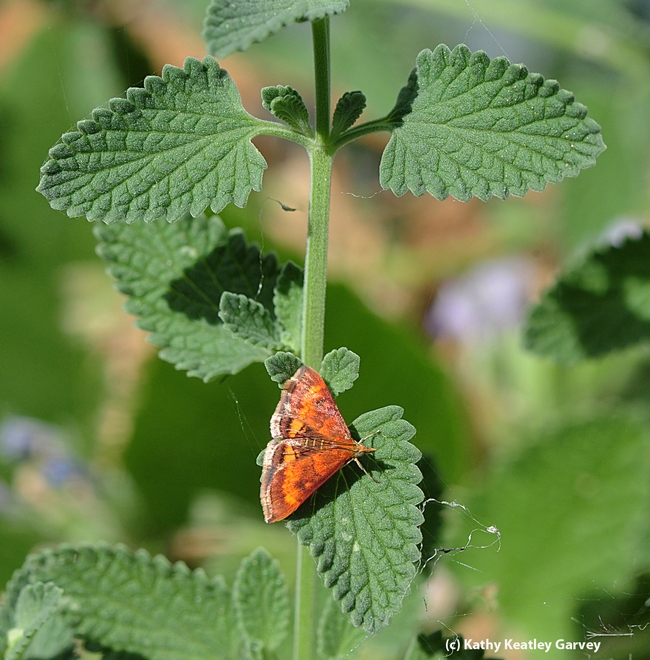
This is a California Pyrausta Moth (Pyrausta californicalis) on catmint. (Photo by Kathy Keatley Garvey)
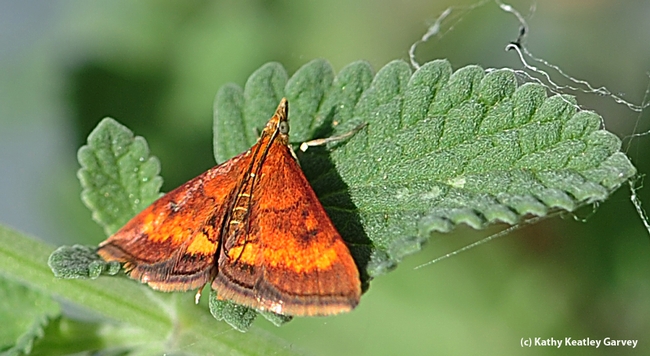
Close-up of California Pyrausta Moth (Pyrausta californicalis) on catmint. (Photo by Kathy Keatley Garvey)



